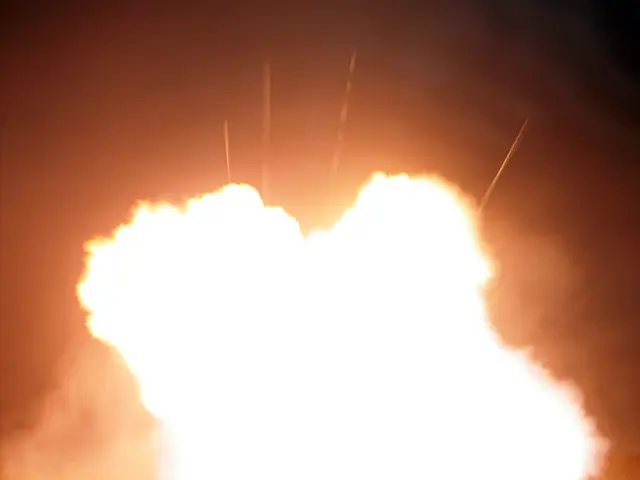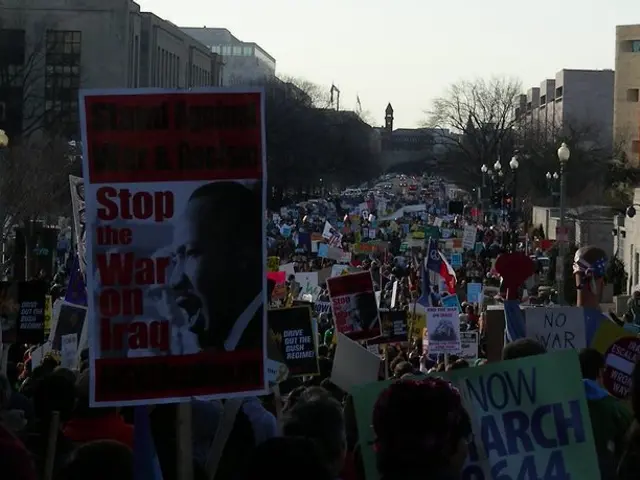Tension in Kashmir: India and Pakistan moving towards potential warfare
The Sky Above Kashmir Echoes Tensions
In the skies over Kashmir, a show of force as Pakistan tests its missiles, targeted squarely at India, their long-time neighbor and adversary. In response, India multiplies its military drills. The tension escalates, causing fear amongst the Kashmir population, living each day in anxiety. "Everyone lives in fear," echoes a local resident.
A Fractured Region at Boiling Point
A crisis meeting takes place in New Delhi with India's military. Simultaneously, a Pakistani diplomat at the UN calls for calm. The situation took a turn for the worse last week, with an attack on April 23 that left 26 civilians and tourists dead in Kashmir. India accuses Pakistan of supporting terrorist groups and threats of retaliation.
Witness the unfolding events in the video above.
Recent Events
- Pahalgam attack: A brutal assault on Hindu and Christian tourists on April 23, 2025, claimed by The Resistance Front (TRF), though India pegs the blame on Pakistan-based groups.
- Military posturing:
- Pakistan tests a ballistic missile on May 3.
- India conducts anti-ship missile drills on April 27.
- Cross-border skirmishes have been reported along the Line of Control (LoC) since April 24.
- Diplomatic breakdown:
- Both nations expelled diplomats, closed borders, and suspended trade.
- India withdrew from the Indus Waters Treaty and suspended all visas.
- Pakistan closed airspace and halted cross-border mail exchange.
Current Situation
- Dangerous Brinkmanship: A senior Pakistani official predicts imminent Indian strikes, echoing the tensions of 2019, but with fewer escape routes due to Modi's hardened stance on Kashmir.
- Domestic Pressure: Indian PM Narendra Modi faces public outrage over the attack and political pressure to act decisively.
- Economic Disengagement: Bilateral trade bans and supply chain disruptions pose risks of local price hikes and shortages in Kashmir.
Impact on the Population
- Humanitarian Stress:
- The threat of cross-border shelling could lead to the displacement of LoC-adjacent communities.
- The India-issued travel advisory against Pakistan disrupts familial ties and labor mobility.
- India’s withdrawal from the Indus Treaty could further water disputes, affecting agricultural communities.
- Security Crackdowns: Increased militarization in Kashmir likely tightens restrictions on movement and dissent.
- Economic Threat: The trade suspensions pose a significant risk to the livelihoods of border region inhabitants reliant on cross-border trade.
The mix of military alerts, broken diplomatic channels, and economic penalties threatens a prolonged crisis, with the civilian population of Kashmir unintentionally caught in the crossfire.
- The tension between India and Pakistan, evident in the skies over Kashmir, has escalated dramatically, resulting in the display of military force, including missile tests and drills, causing fear among civilians, particularly the elderly.
- The recent events in Kashmir, such as the Pahalgam attack and military posturing on both sides, have led to a diplomatic breakdown, with both nations expelling diplomats, closing borders, and suspending trade.
- The current situation in Kashmir is fraught with dangerous brinkmanship, domestic pressure on Indian Prime Minister Narendra Modi, and economic disengagement, which could lead to humanitarian stress, security crackdowns, and economic threats for the local population.
- The mix of military alerts, broken diplomatic channels, and economic penalties threatens a prolonged crisis, with the civilian population of Kashmir unintentionally caught in the crossfire, potentially leading to displacement, disrupted familial ties, labor mobility issues, water disputes, and threats to livelihoods.
- In the face of these war-and-conflicts, crime-and-justice, politics, and general-news headlines, it is crucial to remember the lives affected, especially the vulnerable civilians in Kashmir.










